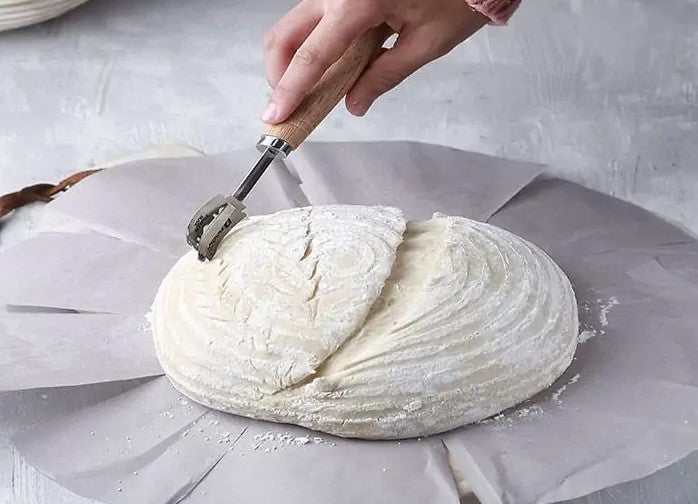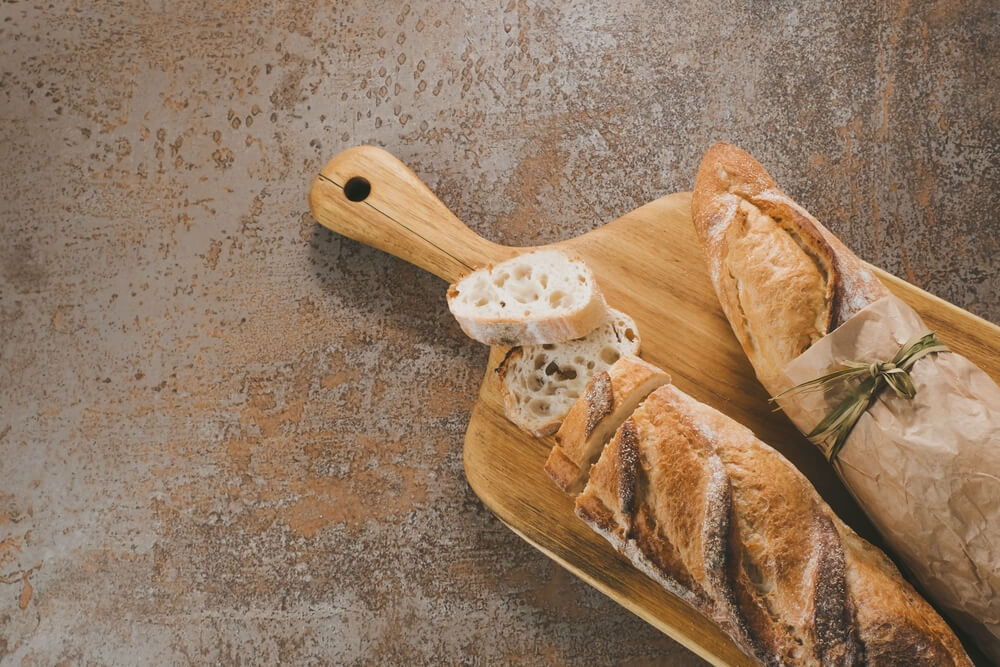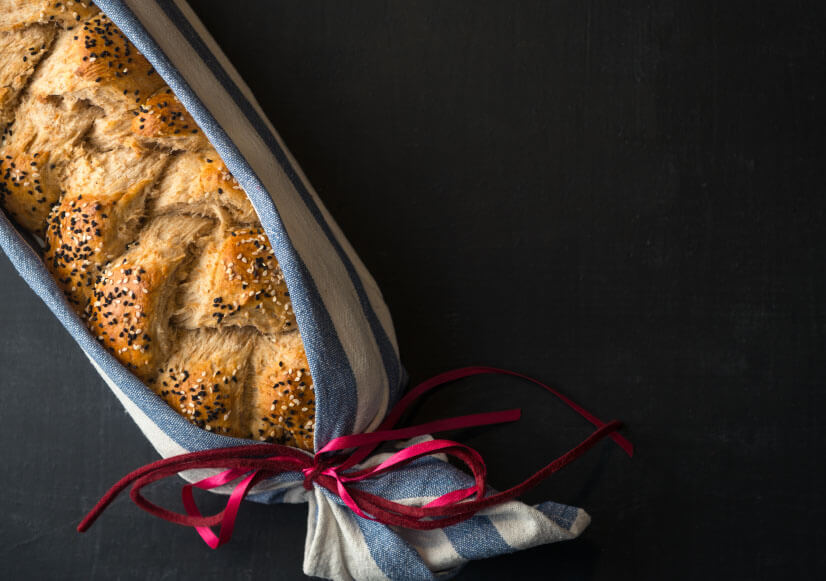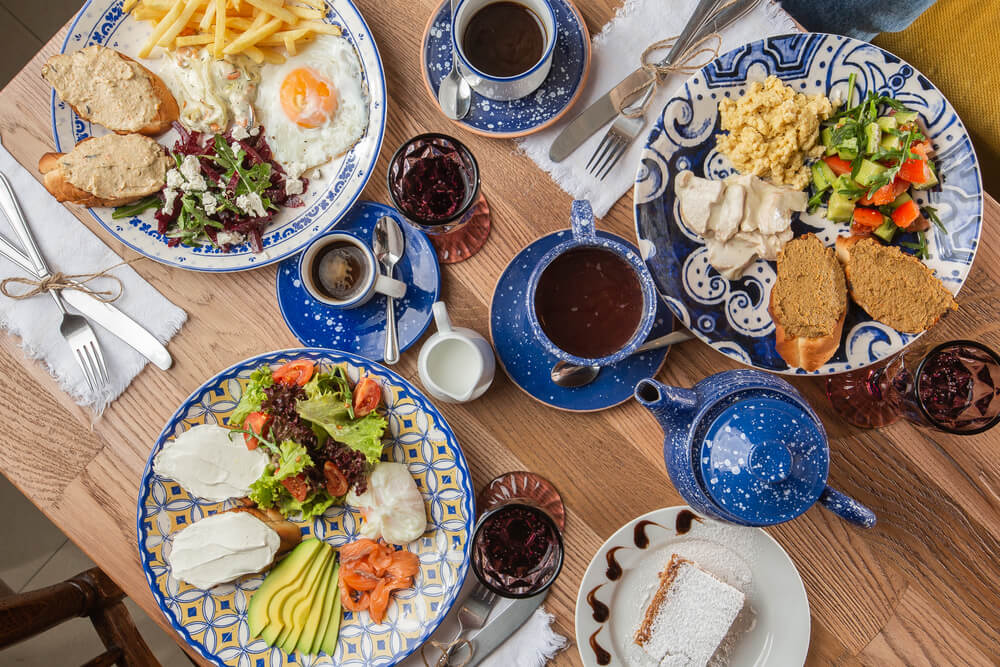Have you ever wondered how the loaves and rolls at your local bakery get those gorgeous lines and patterns across their crust?
Scoring is the process of slicing into the surface of the dough, therefore creating a slash. Then, once it’s placed into the oven, the dough rapidly expands. This expansion can be controlled by scoring.
A score will prevent the loaf from breaking and gives it an extra boost. If you do not cut the dough, it will remain small and blow out on its side as a result. While heating, the air inside expands and causes the bread to rise. A loaf that has not been scored will crack in the places you least expect (as the air is trying to escape).
While this process is essential, it’s also a way to give the loaf more of a handcrafted, artisan look. Many bakers even regard the scoring process as their signature – as you would find on a work of art. You might be wondering how to achieve this effect yourself at home. We’re here to tell you how – all by using a simple baker’s tool.
What is a bread lame?
The lame (which is French for ‘blade’) is typically a long, thin stick that holds a double-edged metal razor. This is used when scoring or cutting dough to control its expansion during the baking process.
While these tools were once exclusively used by professional bakers, they’ve since become more mainstream and used by bakers of all abilities to get the perfect loaf of bread. A specialty knife may not be required to make professional-level bread at home, but it certainly helps to create those distinctive markings. You’ll experience cleaner scores, higher rises and superior results using this relatively inexpensive tool.
There are two different kinds of lame – the straight-edged and curved variants. The knife's edge must be razor-sharp, otherwise it will drag as it passes over the bread’s surface. The cuts you create will allow the dough to open smoothly instead of creating an ear (a raised ridge of crust) when the lame is held perpendicularly. As a result, the crust will be more crunchy.
Shallow cutting is recommended for more intricate designs like flowers or leaves, which can be achieved with a straight blade. With a curved blade, you can create a prominent ear on top of a loaf, or you can use it to make multiple small slashes and ears on the surface, like those on a baguette.
How to use a lame bread slashing tool to score your dough
Your blade should be held at a 45-degree angle, and you should quickly slice your dough at the top.
Decorative patterns can be drawn on balls of dough used to make bread rolls. It is up to you how elaborate or simple you make the patterns. If you make baguettes, you should make about three diagonal cuts, starting each new cut three-quarters of the way below the one before. You can also score batards using the same method.
Making the cuts rapidly will help to prevent the lame from sticking to the bread. It’s also advised to prove your bread in a banneton beforehand to allow the skin of the dough to dry out just enough.
Bread lame vs knife – what’s the difference?
You could use any sharp device to score your dough at a basic level. For example, a kitchen knife or even a pair of scissors will allow you to snip lines into your dough to get the basic effect. However, the benefit of a lame is that you’ll have enhanced manoeuvrability and the ability to create enhanced designs and patterns.
Since it’s so lightweight, there is less chance of it dragging on the bread's surface. As a result, lames are an essential tool for bakers when it comes to intricate scoring tasks.
It is far safer and more convenient to handle a lame than a double-sided razor or an ordinary knife, because of its convenient handle. In addition, the blade is kept safely away from your body. You also won't need to handle a sharp edge when holding or cleaning it afterwards.
By using a dedicated tool for your scoring, you also help minimise the risk of cross-contamination. Kitchen knives are used for a range of purposes, which can be a hazard if they’re not cleaned after every use to cut other kinds of food materials.
How to safely attach the blade
For these tools to be practical, they need to be razor-sharp. Unfortunately, as the blades are disposable, they cannot be re-sharpened and will need to be periodically replaced. Keep your scoring tool clean will extend its life. If you properly wash and dry the blade after every use, you’ll be able to score dozens of loaves before you need to replace them.
Never try to handle the razor blade with your fingers when it comes time to replace it. Instead, use a tea towel to remove and replace the blade safely. Don't throw these blades in the rubbish either, as they can be a hazard there as well (plus, you don't want to slash the bag when you try to carry it to the bin).
It’s also possible to recycle the replaceable razor blades. For your safety, store these in a metal or tin container. Once the container is full, seal it and contact your local council to find out where your nearest recycling facility is.
If you want to get creative in the kitchen, browse our range of lames now including the UFO Corbeau – which is durable, waterproof and made from 100 per cent recycled paper and food-safe resin. Your culinary baking adventure awaits you.





